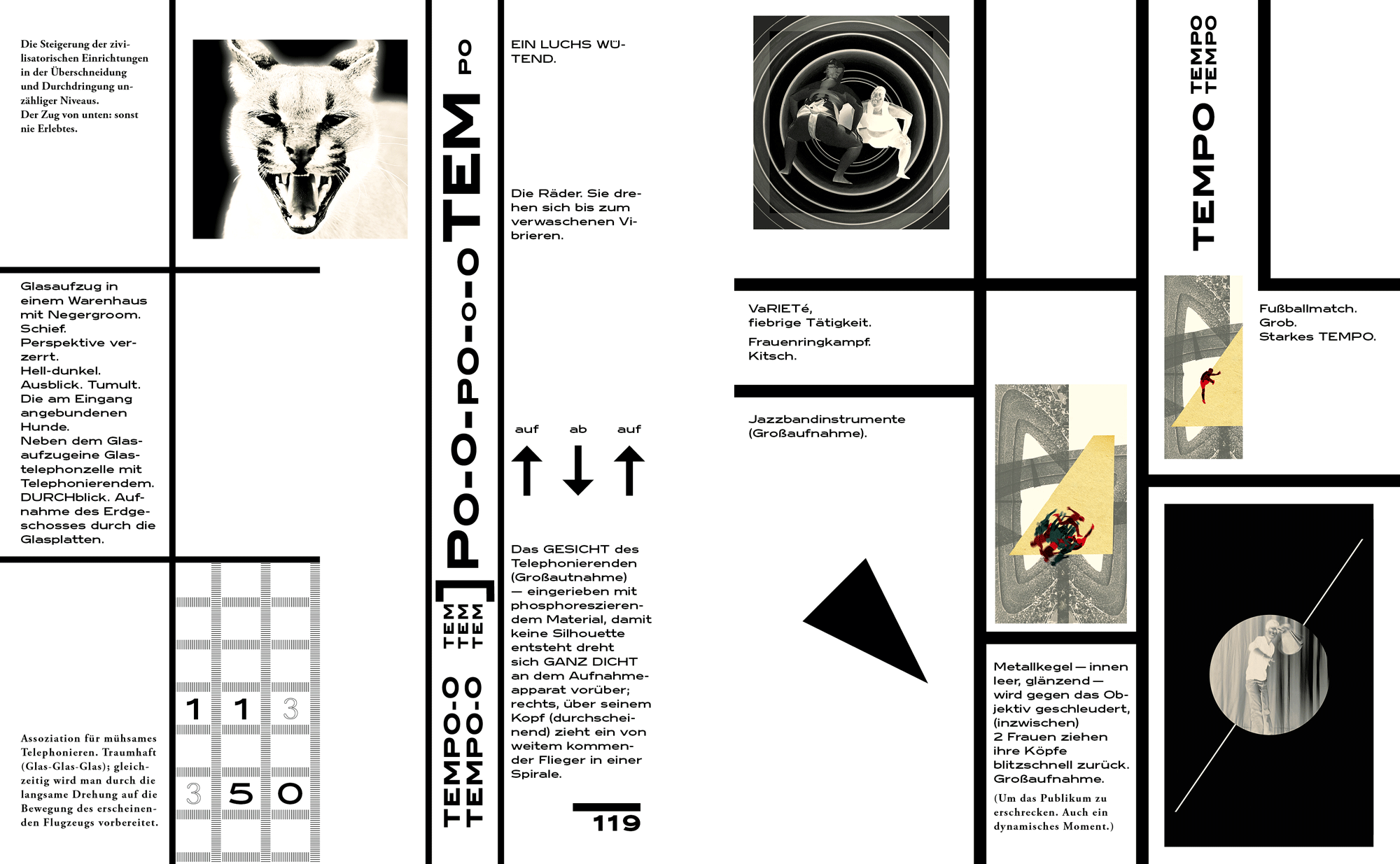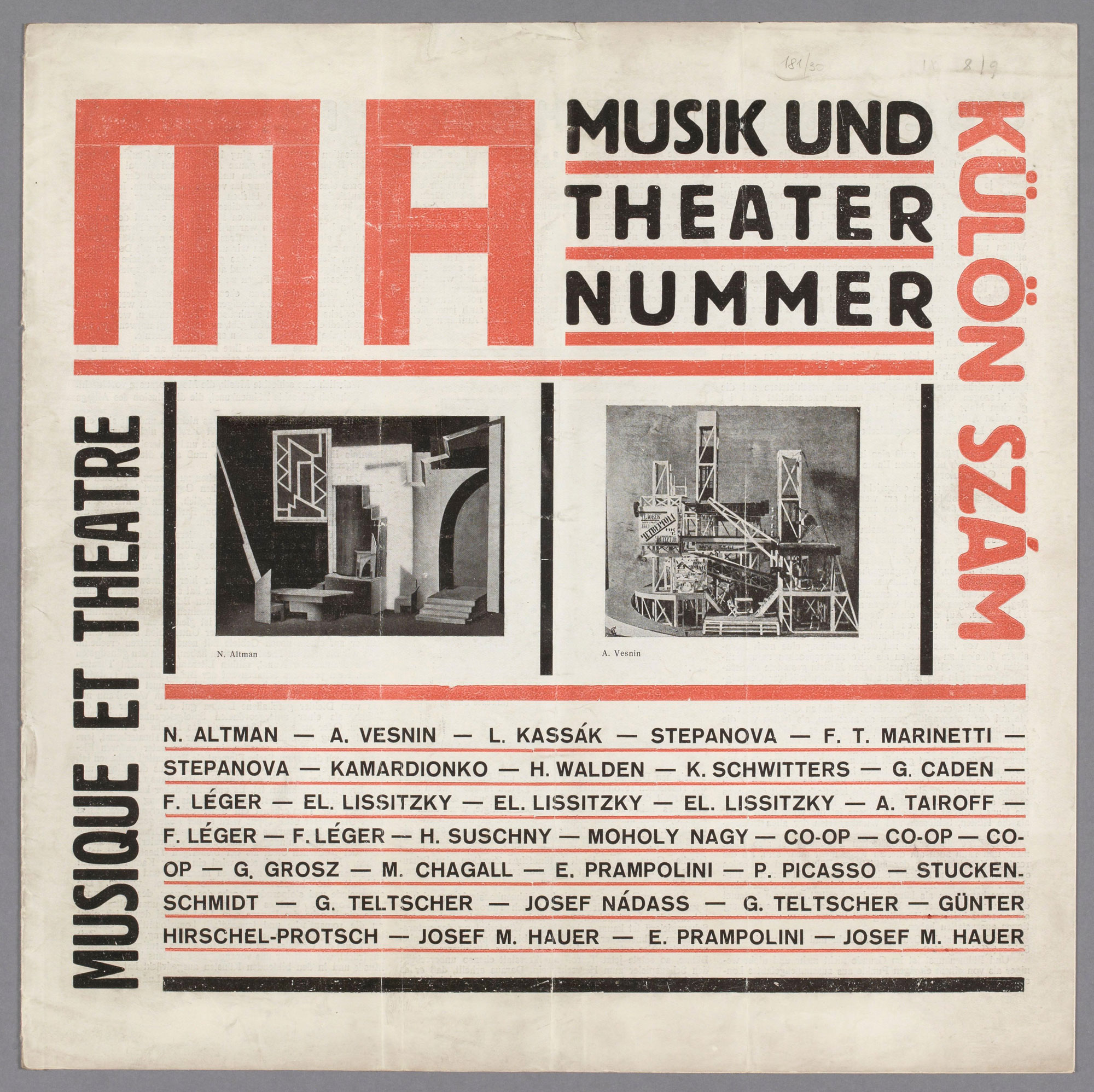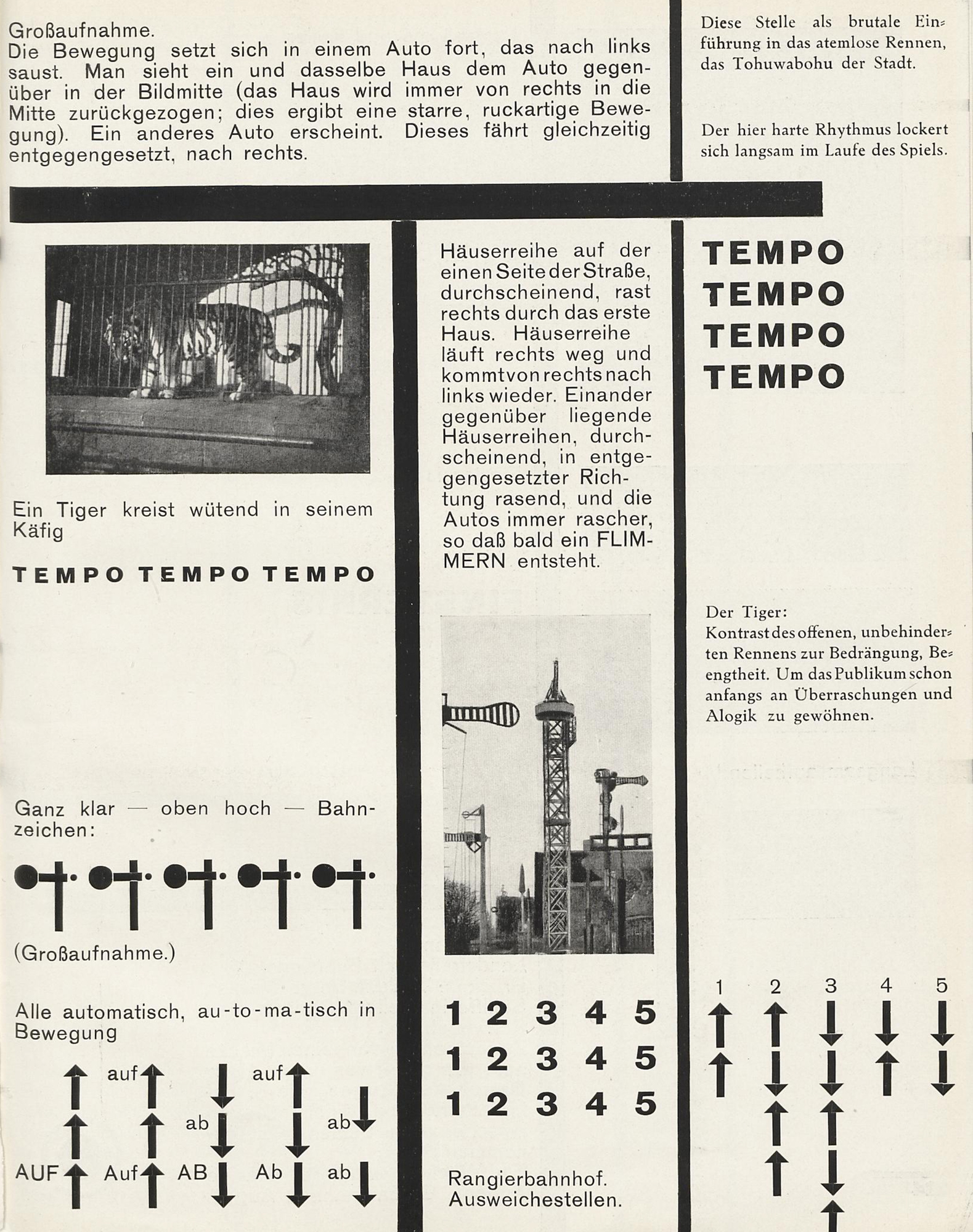Actualization / Dynamic of the Metropolis
[Dynamik der Groß-Stadt, László Moholy-Nagy, 1925]
Duration: 13:54 min (Loop)
Film script | László Moholy-Nagy, 1925
Realization | Schroeter & Berger © 2019
Animated film, 16:9
Sound | Jonas Holfeld (www.ph17.net)
Mastering | Malte Audick
Courtesy | Klassik Stiftung Weimar
In this hectic and superficial time, we find it exciting to extract from history artworks, sketches or plans that for various reasons were never or only partially realized. Having liberated them from the context in which they were constrained to emerge, we bring them into the present in order to discover what the consequences of their realization are. The possibility thus arises to expose these pieces to another present. The purpose of this process is not to give history up for lost. What results are no longer mere references to existing ideas, but rather, their autonomous further development or actualization. Such actualizations can serve to recover lost beginnings and to expose new endings. We begin where history left off, where it came to nothing, where it was obstructed.
In our engagement with the foundations and the intellectual history of the Bauhaus, in 2004 we encountered the fascinating Bauhausbuch no. 8, Painting Photography Film, 1925, by László Moholy-Nagy. Excited by the continuing relevance of his visionary ideas, we decided to attempt a multi-media interpretation and transformation of the script for Dynamic of the Metropolis [Dynamik der Groß-Stadt], a Turkish version of which premiered in Ankara in 2005. The actualization of the film script that can be seen here is our second, which we produced in 2019 at the invitation of the Klassik Stiftung Weimar, exclusively for permanent exhibition in the new Bauhaus Museum (fig. 1).

Metropolis
László Moholy-Nagy moved to Berlin in 1920. He subsequently planned to make a film about daily life in the city of Berlin; large cities in general had been a source of fascination since he was a child. However, starting in 1922 permission to make such a project was denied by the authorities. Not until 1931 was he able to realize his film Berlin Still Lives, under adverse circumstances and without a permit—after Impressionen vom alten Marseiller Hafen (vieux port) (1929) and Light-Play Black White Gray (1930).
Moholy’s original project, a film on the metropolis, took form in the unique film manuscript Dynamic of the Metropolis, which he developed in 1921-22. In September 1924 he published the first version of the manuscript in Hungarian in the programmatic Music and Theater Edition of the magazine MA1 (fig. 2), under the title “A nagyváros dinamikája”. It was then republished in German in 1925 in the Czech magazine Pásmo no. 11/12 2.
With the publication of a redesigned version of the manuscript in his Bauhausbuch no. 8 Painting Photography Film in 1925, he achieved a completely different formal quality in a new phase of his artistic development. It can be inferred that by the second edition in 1927 3 (fig. 3), Moholy-Nagy no longer believed the film would be realized and had come to understand the script as an avant-garde typo-photo work. In the meantime, Walter Ruttmann had produced the film Berlin, Symphony of the Metropolis. Examination of this work suggests that Ruttmann knew the script for Dynamic of the Metropolis and had clearly been more than just inspired by it. The unrealized script thus became a film-to-be-read—an early form of the photo-novella—which, especially in its written stage directions, displays literary qualities comparable with the rhythmic prose of its time, or with free verse such as was published by Lajos Kassák in the previously mentioned magazine MA.


Our Production
So as not merely to process the script into a live action film, and in order to approach the idea of “polycinema”, we decided to employ the graphically exciting source material as the framework for an experimental animation film. The non-stop dynamic of the metropolis was to be rendered through the vertical scrolling of the graphic framework. The current possibilities of animated film enable control in production, especially with respect to the impressive and critical stage directions in the script. Moholy’s sensitive, attentive, and precise observations of the metropolis were to be illustrated with clearly legible means. On the basis of the collage technique and Moholy’s use of appropriated images, we inserted our own images and found footage from public domain archives.
Moholy was known to have devoted himself to the correlation of image and sound on various levels, so that the script with its references to “film parlant” [talking pictures] can to some extent be understood as a precursor for sound film. In accordance with these ideas, the Weimar-born musician, producer, and computer scientist Jonas Holfeld composed an elaborate audio collage for the film. The contemporary relevance of Moholy-Nagy is reflected in the concatenation of fast sequences of animated image, text, and sound elements, all of which are specific to the metropolis. Moholy-Nagy already specified a non-linear, simultaneous narrative structure in order to be able to show the dynamism, change, and development that characterize the big city. Moholy-Nagy’s practical observations have a visionary character today, since the constellations that he identified have gained relevance and emerge as increasingly apparent issues facing society.
In conclusion, it should be noted that we see Moholy-Nagy as a multi-talented designer and media artist in addition to an under-appreciated planner and architect who, under the influences of the natural sciences, psychoanalysis, reform pedagogy, and collectivist anarchism, aspired to a new formation of society through education, pedagogy, and art. The absolute present of authoritarianism, life-threatening fascism and a Stalinism hostile to modernism substantially restricted his progressive ideas and plans, and thus impeded the continuing development that would have been appropriate for his work. In accordance with this marginal reading, Dynamic of the Metropolis presents itself as a key work for his concept of “new vision”, “vision in motion”—a key work whose diverse possibilities of realization we recommend to all people who design.